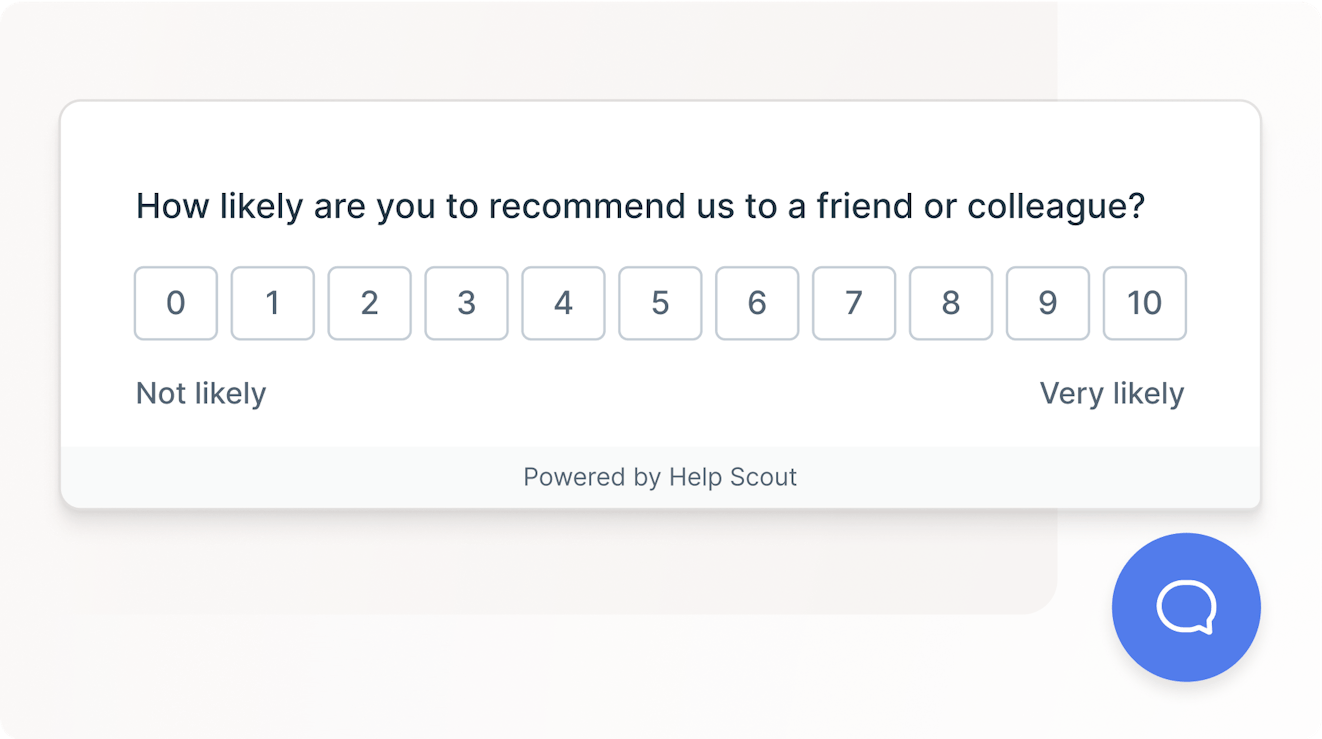Perception is everything. The way your customers perceive your company impacts acquisition and retention — and it can even affect your ability to raise capital. In other words, your success depends on creating a positive customer perception.
To help, we’ve created this guide to customer perception: What it is, why it’s important, and what you can do to enhance yours. Keep reading to form a deeper understanding of how customer opinions impact revenue, and learn what you can do to control and improve how customers perceive your business.
What is customer perception?
Customer perception is how customers feel about your product and brand. It’s an opinion that they’ve formed through every interaction they’ve had with your company, both direct and indirect.
It’s more than just whether customers “like” you; customer perception includes the feelings your business inspires in them, along with any descriptive words they would use when talking about your business.
Understanding how your customers perceive your company can help you improve your marketing, spot opportunities to improve your service delivery and grow your business.
Why is customer perception important?
The way customers perceive your business impacts every action they take. Positive customer perception can increase brand loyalty and generate referrals. It does this in two ways:
Value alignment: If customers perceive your business as having strong values that align with their own, they’re far more likely to purchase from you. A 2020 consumer culture report found that 71% of consumers prefer buying from brands that align with their values.
Trust signals: A positive customer perception can help develop trust. If you’re seen as a trustworthy business (i.e., you do what you say you will), customers are more likely to “engage with, buy from, advocate for, and defend you” according to Edelman’s 2020 Trust Barometer Report.
Gerry Wisniewski, Managing Director at Edelman, also says that “trusted companies are much more resilient in the face of a crisis or risk,” which is exceptionally important in today’s market.
Four factors that influence customer perception
Customers are influenced by more than you think. While your public marketing might tell your customers how you want to be seen, they’ll also make their own opinion based on any number of different factors.
1. Customer reviews
Ninety-three percent of customers read online reviews before purchasing. That means your online reviews can have a big impact on how prospective customers see your brand.
Positive reviews are obviously great, but taking the time to respond to negative reviews can also improve how customers see your brand. Caring and empathetic responses show that even when things go wrong (as they often do), your business will be there for the customer.
2. Marketing
It’s likely not a big surprise that the way you showcase your brand through marketing has a big impact on how customers perceive you.
Your website, advertisements, and social media posts can all play a role in developing your public image. That’s why it’s important to be consistent across all company-owned media. Know what you want your customer perception to be, and then come up with messaging around it.
3. Company values
As mentioned above, customers want to do business with companies that have similar values to their own. Having public company values that you adhere to heavily influences your customers’ perception of your brand.
For example, Patagonia is known for their support of the environment, and their customers appreciate that about them. When Patagonia received a $10 million dollar tax cut, they donated the entire amount to combat climate change, acting in line with their company values.
Does that change your perception of Patagonia?
4. Customer support quality
How you support your customers speaks volumes about what you think about them. Great customer support shows that you care and that you invest in the customer experience.
Poor customer service, on the other hand, suggests that you either don’t care or aren’t able to provide great support. Neither of these improves customers’ perceptions of your company.
Ways to measure customer perception
Because customer perception is wide reaching and impacted by almost every part of your company, there are many different ways to measure it.
Net Promoter Score (NPS) surveys
The most straightforward way to understand what your customers think of you is to ask them. NPS® is a popular survey to use because it’s easy to set up, and its short format results in high response rates. It can be sent over email or delivered directly on your website or in your app.

Besides the usual “How likely are you to recommend X company to your friends and family,” I recommend following up with a second question to gain a better understanding of how your customers describe your business. You may ask something like:
If you were to recommend us, what would you say?
What’s the biggest reason you gave the answer you did?
What’s one word that you’d use to describe our company?
Monitor online mentions
Your customers are vocal when they are online, and they’ll likely talk about you on social media and review sites. If you’re listening, this feedback is essential to measuring customer perception.
For example, if you sell B2B software, reviews on G2 (a crowd-sourced review site) influence whether your company makes customers’ shortlists. Your rating on these sites provides a quantitative measurement of how customers see you.
Online mentions on social media sites can also be analyzed to measure customer sentiment and to identify common themes associated with mentions of your brand. For example, try using Twitter data to create a word cloud from text analysis.
You can also dive further using text analysis on reviews, customer satisfaction responses, and social media comments to analyze sentiment.
Interviewing customers
For more in-depth analysis, consider interviewing customers at different stages of their lifecycle. Why did they choose to sign up? Why did they choose to leave? How would they describe your product or service? Having a longer conversation with customers will move your understanding beyond simple survey responses.
User Interviews has compiled an excellent guide to doing customer interviews. While interviews are more time intensive than surveys, the extra time pays off!
How to create a positive customer perception of your company
While many of the factors that influence customer perception may seem out of your control, the truth is that all opinions stem from the way you treat your customers and the way your company acts. Here are four ways to ensure customers see your company in the best possible light.
1. Respond to customer feedback
Most businesses collect customer feedback in some shape or form. But a study by Qualtrics found that less than half of customers surveyed felt that their feedback resulted in changes.
Taking the time to respond to and act on customer feedback goes a long way toward making customers feel that you care.
Leverage contextual data to personalize your responses
When it’s time to solicit and respond to customer feedback, a dedicated tool may not be the best choice. Instead, consider some of the tools that are already part of your tech stack, such as your customer communications platform.
Users across all Help Scout plans have access to our feedback solution, microsurveys. With microsurveys, you can:
Capture customer sentiment instantly by surfacing one of six short, targeted surveys — including NPS®️ and multi-choice — right from your website or app.
Gather insights from each of your surveys via a dedicated reporting dashboard.
Close the feedback loop with respondents by launching a conversation right from your survey’s responses dashboard.
Using a tool that allows you to address feedback directly from within your help desk can provide you with the data you need to provide contextual responses that make your customers feel seen and heard.
2. Understand who your audience is
You can’t be universally loved by everyone. Instead, understand who you’re trying to appeal to and what they want.
For example, consider Snowbird ski resort’s “one star” campaign. They took real one-star reviews that they got from visitors in the past and turned them into a wildly successful advertising campaign. They want their visitors to perceive their resort as epic, advanced, and fun.
This one-star review from the campaign just makes other skiers want to visit Snowbird even more:
"I've heard Showbird is a tough mountain, but this is ridiculous. It felt like every trail was a steep chute or littered with tree wells. How is anyone supposed to ride in that? Not fun!"
3. Recognize and reward customer-centric behavior
Because customer perception is influenced by every interaction customers have with your business, it means that every employee has a part in how your customers feel.
In order to create a positive customer perception, you need to first build a customer-centric culture that empowers employees to act in the customer's best interest.
Start at the top. Executives and managers all need to act in the interest of the customer. If they set a good example, the rest of the company will follow.
Build an employee-centric culture. Pay employees well, offer them opportunities to grow, and provide them with the support to do the right thing for the customer. Put your internal people first, and they will do the same for your customers.
Get everyone talking to customers. From engineers to executives and every functional team in between, everyone should be interacting with your customers. One way to do this is through all hands support, but you can also run customer interviews or host events.
Perception is everything
I've learned that people will forget what you said, people will forget what you did, but people will never forget how you made them feel.
Customer perception determines how your customers feel about you, whether they continue to do business with you, and whether they recommend you to their family and friends. In other words, how customers perceive you is a big deal!
A focus on creating a positive customer perception will help you grow your business — and it will keep your customers happy, too.



